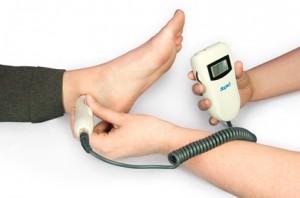Diabetic Foot Care - Better Treatment for Diabetic Feet
Diabetic disorder puts you at a higher risk of developing complications in your legs and feet. Corns, blisters and ulcers are common for diabetic patients. Your high blood sugar levels and disrupted blood flow have a direct connection. Therefore, keeping your feet in good shape becomes a challenge when you are dealing with diabetes. Daily inspection of diabetic feet helps a lot to keep potentially disabling infections at bay. To gain in-depth insight into diabetic foot care it is best to regularly visit a podiatrist and get professional guidance. In this post, we will discuss foot complications diabetic people are most likely to get and how a podiatrist can help to manage them.
What is a diabetic foot?
Diabetes causes improper blood flow to the leg; as a result you may feel numbness in the legs and noticing blisters, sores, nicks and cuts becomes difficult. Nerve damage due to diabetes is very common. It is considered a leading cause of neuropathy, which affects 70% of the diabetic population. To prevent further damage, it is essential to see a podiatrist for regular check-ups and diabetic foot treatment.
How to tell if you have diabetic feet?
Diabetic neuropathy or nerve damage is a common occurrence in those who are having a hard time managing their blood sugar levels. In order to inspect your feet for diabetic neuropathy, you can refer to the list of common symptoms given below:
- Failure to sense hot or cold
- Hair loss in the affected area
- Skin discoloration in the affected area
- Diabetic foot pain accompanied by numbness and tingling
- Redness and swelling
- Discharge or a foul smell from cuts, blisters and callpuses
What are the common complications of a diabetic foot?
It is important to regularly check your feet if you are diabetic. When left ignored the blisters and sores may lead to severe infections and result in diabetic foot ulcers. Even if your foot ulcers are not hurting, you should get them checked immediately because diabetic feet complications can result in hospitalization due to severe bone infection and even deformity and you may not be able to properly feel the pain.If you are at risk of getting diabetic feet, the risk of foot amputation increases. Therefore, it’s best to stay informed and schedule a regular appointment to get your condition treated before it gets worse.
How to take care of diabetic feet?
Painful and tingling sensations are very common for diabetics. However, the slightest change in symptoms shouldn’t be ignored. Apart from managing blood sugar levels, it is important for diabetics to follow these steps to keep their feet healthy:
- Check your feet and legs daily.
- Don’t forget to check between the toes.
- Don’t ignore the discoloration of the nails.
- Check if there is any unusual swelling or redness.
- Visit a podiatrist to get general foot care treatment.
- Educate yourself on self-care tips and the right footwear choices.
A daily check-up is the key to avoiding any serious infections. Regular visits to the podiatrist are also helpful to learn about some useful self-care tips. With proper assessment, the specialists can guide you with suitable footwear options and timely medical treatments.
How can a podiatrist help?
Podiatrists are doctors who specialize in varied foot and leg conditions. Any complications related to diabetic feet can be treated by a podiatrist. Visiting a podiatrist on a regular basis helps you to minimize the risk of infection. Additionally, you can get specialized treatment for blisters, sores and toenails problems. Visiting a podiatrist is recommended to attain the following benefits:
- Specialist feet assessment: Annual foot assessments are recommended for diabetics. The evaluation includes ultrasound technology to check the condition of the skin, nails, and sensation in the feet. During the annual visits, the podiatrists conduct neurological and vascular assessments to ensure the overall health of your feet is in good shape.
- Foot care for peripheral vascular disease: Healing a wound becomes a prolonged process for diabetics and the underlying reason is circulation damage. A podiatrist can assess your condition and suggest the required treatment or exercise for it.
- Personalized care for peripheral neuropathy: Loss of sensation is related to nerve damage. When diabetics are not able to feel injuries, it becomes important to get their feet assessed regularly for any possibilities of infection.
- Diabetic foot pain treatment: To steer clear of the risks of foot ulcers and amputations, it is recommended to visit a podiatrist and get some effective pain management suggestions.
- Diabetic foot ulcer treatment: Those who are managing diabetes should get their feet checked regularly to rule out any possibilities of developing severe infections. If the skin is red, swollen or there is a foul smelling discharge, the underlying reason is likely a diabetic foot ulcer and to get it treated, you should visit a podiatrist immediately.
- General foot care and guidance: Apart from the specialized treatments, visiting a podiatrist on a regular basis is also helpful to cut toenails and get rid of dry skin, callouses, blisters and more.
Final word
Nerve damage and poor blood flow are common for diabetics. Thus, wearing the right footwear and becoming well-educated on self-care methods to minimize the risk of ulcers and foot amputation is vital. To learn more about diabetic foot care and treatment, visit the link given below.
